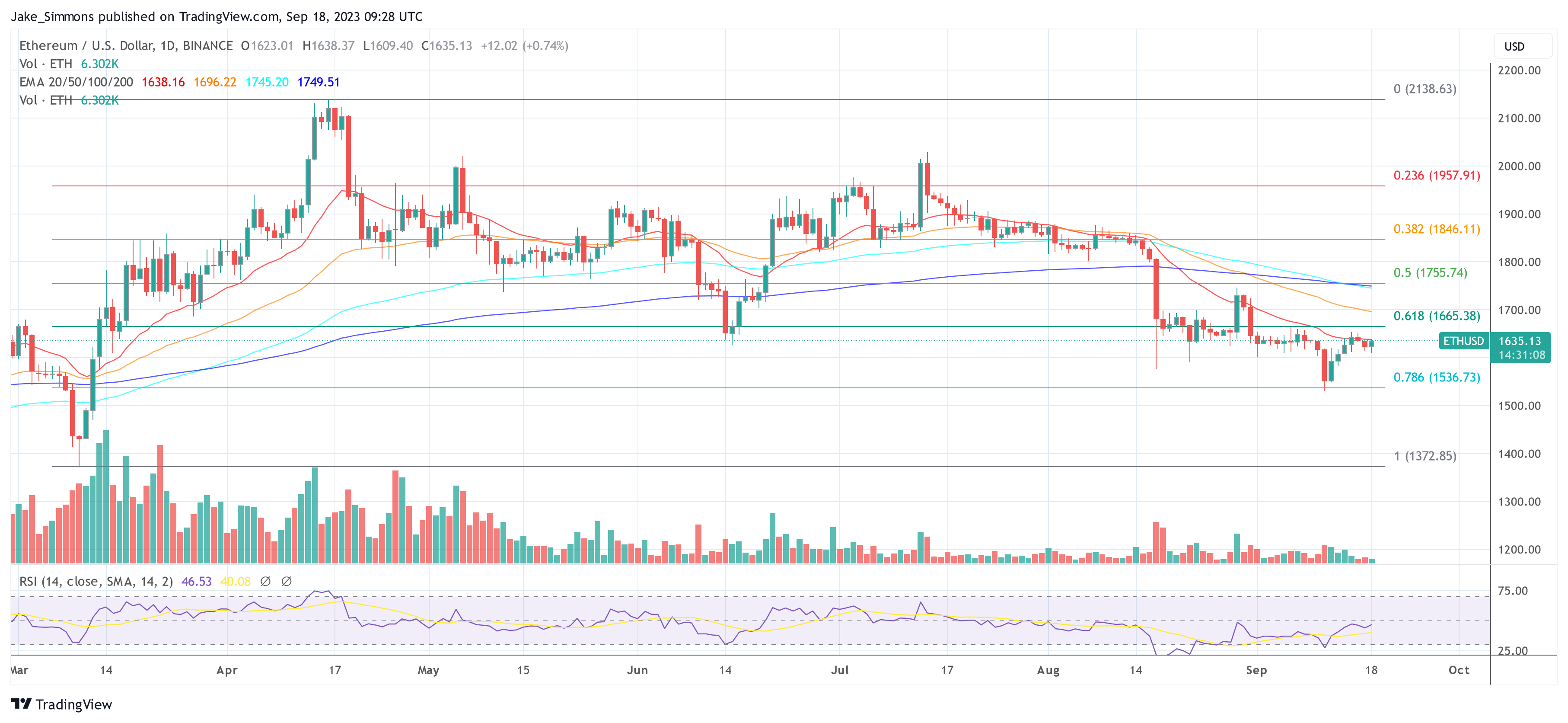Conspiracy theory or one of the biggest scandals in crypto? The term “ETH Gate” has been on the lips of every XRP supporter in recent months and, increasingly, the broader cryptocurrency community. At the heart of this issue is the US Securities and Exchange Commission’s (SEC) decision to classify Ethereum (ETH) as a non-security, contrasting sharply with its ongoing legal action against Ripple and the XRP token.
What is ETH Gate
One cornerstone of this theory are the Hinman emails which were released earlier this year. In these emails, Hinman, who made the landmark speech in 2018 declaring that Ethereum was not a security, interacted with Ethereum’s co-founder, Vitalik Buterin right before the speech. Hinman reportedly consulted Buterin to “understand the operational dynamics of Ethereum.”
Speculations By XRP Army
John E Deaton, an outspoken figure in the XRP community and a keen of the SEC’s dealings, has painstakingly put forth allegations suggesting a deeper web of interlinked relationships that hint at possible conflicts of interest. (There are so many that it is not even possible to highlight them all in one article.) His assertions have become pivotal in the “ETH Gate” theory, and here we’ll delve deeper into these connections.1. Joseph Lubin’s Strategic Moves: Joseph Lubin, co-founder of Ethereum and founder of ConsenSys, is at the core of Deaton’s claims. According to Deaton, within just two months of Jay Clayton’s appointment as the SEC Chairman, Lubin made a potentially strategic hire, bringing on board Patrick Berarducci from the law firm Sullivan & Cromwell. This move is seen by Deaton and many in the XRP community as more than coincidental.
2. The Hinman-Lubin Email Exchange: Deaton frequently refers to the now-infamous email exchange between Bill Hinman and Joseph Lubin. For Deaton, this correspondence underscores a problematic level of proximity between a regulatory figure and a significant player in the crypto sphere.
The fact that Hinman reportedly emailed Lubin directly is seen by Deaton as a potential sign of collaboration or at least a peculiar level of familiarity. More so, given Hinman’s subsequent public remarks about Ethereum being a non-security, despite warnings against such pronouncements from the SEC’s Office of General Counsel.3. Jay Clayton and One River Digital Asset Management: After his tenure at the SEC, Jay Clayton joined One River Digital Asset Management. Deaton emphasizes this move as a point of contention. One River is known for its large holdings of Bitcoin and Ethereum. Deaton hints at a potential conflict of interest, questioning if Clayton’s decisions during his time at the SEC may have been influenced by future career prospects or associations that favored Ethereum.
4. Simpson Thacher, Ethereum Enterprise Alliance, and Hinman: One of the most significant points of contention brought forth by Deaton involves Bill Hinman’s associations with the law firm Simpson Thacher. This firm played a role in the Ethereum Enterprise Alliance.
Deaton suggests that Hinman’s connection to Simpson Thacher and, by extension, the Ethereum Enterprise Alliance, could have influenced his decision to publicly declare Ethereum a non-security. Similarly, an XRP community member known as Mr. Huber has been extremely vocal and is raising compelling : “ETH Gate is a conspiracy theory that the SEC tried to create a monopoly for Ethereum?” He goes on to argue that this is a concerted attempt by powerful Wall Street banks like JPMorgan to “control the global crypto market by bribing the SEC to gain a monopoly for Ethereum.”Latest News On ETH Gate
Yesterday, John E Deaton indicated that new, potentially damning, information about ETH Gate might soon be disclosed. “I’ve always said that one day we will get the full truth. Today is one day closer,” Deaton tweeted in response to Steven Nerayoff’s lawyer, Michael Scotto, who indicated that Nerayoff is prepared to make his facts known “at a time and manner that serves the interests of justice and the people.” Steven Nerayoff, an early adviser to Ethereum, had extortion charges against him dismissed in May this year. Deaton speculates that Nerayoff could be a significant source of insider information, possibly related to Ethereum’s regulatory free pass. “I have the map,” was Nerayoff unequivocal response to Deaton’s speculative tweets about the matter, as Bitcoinist today. The “ETH Gate” controversy calls into question the impartiality of the SEC in its treatment of different cryptocurrencies. Although allegations remain unproven, the gathered evidence paints a picture of inconsistent regulatory approaches and potential conflicts of interest. Whether these allegations hold any water remains to be seen, but they have certainly fueled a sense of urgency and scrutiny around the SEC’s policies. If the hints dropped by Steven Nerayoff and John E Deaton materialize into something substantive, ETH Gate could become a pivotal chapter in the annals of cryptocurrency regulation. At press time, ETH traded at $1,635.














